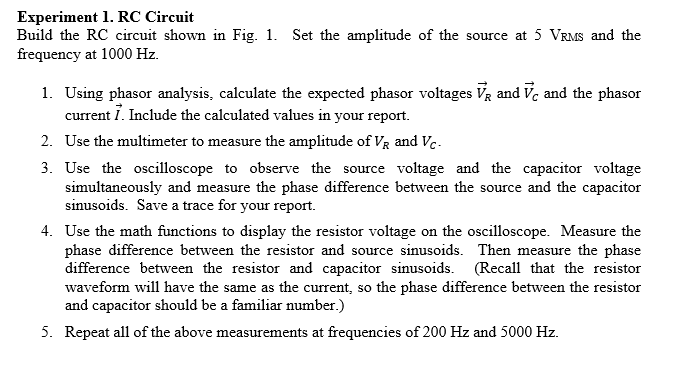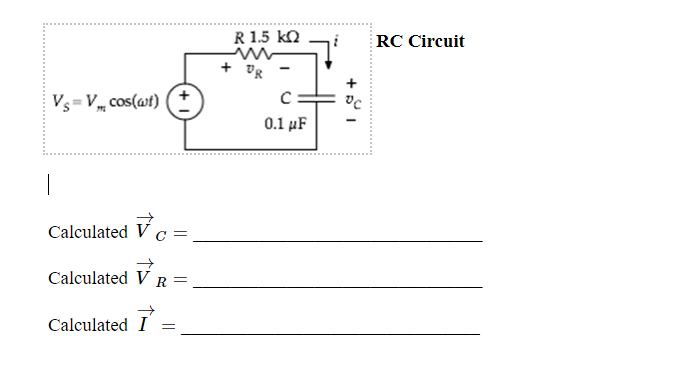Home /
Expert Answers /
Electrical Engineering /
nbsp-nbsp-nbsp-if-you-could-help-with-step-1-finding-vc-vr-and-i-it-would-be-greatly-pa404
(Solved): If you could help with step 1 finding Vc, Vr, and I, it would be greatly ...
If you could help with step 1 finding Vc, Vr, and I, it would be greatly appreciated!
Experiment 1. RC Circuit Build the RC circuit shown in Fig. 1. Set the amplitude of the source at 5 VRMS and the frequency at \( 1000 \mathrm{~Hz} \). 1. Using phasor analysis, calculate the expected phasor voltages \( \vec{V}_{R} \) and \( \vec{V}_{C} \) and the phasor current \( \vec{I} \). Include the calculated values in your report. 2. Use the multimeter to measure the amplitude of \( V_{R} \) and \( V_{C} \). 3. Use the oscilloscope to observe the source voltage and the capacitor voltage simultaneously and measure the phase difference between the source and the capacitor sinusoids. Save a trace for your report. 4. Use the math functions to display the resistor voltage on the oscilloscope. Measure the phase difference between the resistor and source sinusoids. Then measure the phase difference between the resistor and capacitor sinusoids. (Recall that the resistor waveform will have the same as the current, so the phase difference between the resistor and capacitor should be a familiar number.) 5. Repeat all of the above measurements at frequencies of \( 200 \mathrm{~Hz} \) and \( 5000 \mathrm{~Hz} \).
Calculated \( \vec{V}_{C}= \) Calculated \( \vec{V}_{R}= \) Calculated \( \vec{I}= \)

